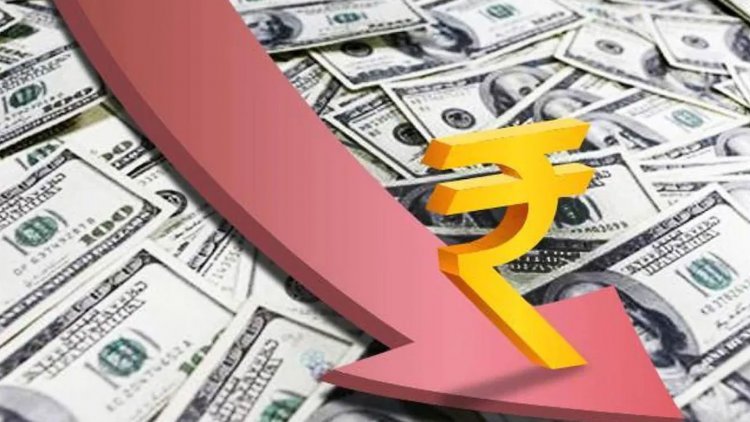Rupee declines more against the dollar, setting a new record low
The rupee is under pressure as a result of the collapsing Chinese yuan, rising US Treasury yields, rising US dollar index, and rising Brent crude prices.

Early on Thursday, the rupee set a new record low against the dollar. According to forex brokers, the rupee is predicted to continue to decline as the dollar gains strength.
The Indian rupee opened at 83.05. At 12:00 PM, it was trading at 83.20 against the US dollar. The rupee lost 60 paise on Wednesday, falling to 83 to the dollar, breaking through the 83 mark for the first time.
"The rupee is under pressure due to the sinking Chinese yuan, bouncing DXY (US Dollar Index), rising Brent crude prices, and higher 10-year UST (US Treasury) yields. Concerns about China's geopolitics and COVID are still present "said Shinhan Bank vice president Kunal Sodhani.
The dollar index, which measures how strong the dollar is relative to a basket of six different currencies, increased 0.07 percent to 113.06.
The US Federal Reserve and other central banks have been raising interest rates to combat inflation that is at multi-decadal highs, which has caused a sharp inflow of capital into the largest economy in the world. This is why the dollar is strengthening.
Even though a survey revealed that homebuilding declined more than anticipated in September and that the number of new single-family home groundbreakings fell to the lowest level in more than two years, the yield on 10-year US Treasury notes hit a fresh 14-year high. The 10-year US yield increased to 4.139%.
In the late afternoon, India time, Brent crude oil prices were trading at $92.89 a barrel.
RBI involvement
The rupee increased to the 83 level on Wednesday after fluctuating between 82 and 82.70 per dollar for eight trading sessions. The rupee lost 60 paise in the final 1.5 hours of trading, falling from 82.43 to 83.03 per dollar.
"On the plus side, stop-loss targets were severely hit by the absence of central banks, trapping short traders who were anticipating RBI intervention near 82.40–45. Additionally, it was reported that corporate purchasing also took place "In a note, Managing Director of CR Forex Advisors Amit Pabari wrote.
He continued by saying that due to the overall positive sentiment around the USD-INR pair, importers hurried to cover short-term payables while exporters held off on selling.
The rupee has plummeted around 12% versus the dollar this year, and the central bank has so far used more than $100 billion of its foreign exchange reserves to protect it, although RBI has been silent during the most recent decline.
Dealers have claimed that the RBI's intervention will become less intense. Others stated that since India has substantial foreign reserves, they anticipate the central bank to continue to support the local currency.
"Despite the recent fall in FX reserves, we still have enough reserves to safeguard the currency. Since hot money flows will return the next year when the Federal Reserve takes a break, we anticipate RBI to continue to support the rupee "Dilip Parmar, a research analyst at HDFC Securities, stated.
According to the central bank's Weekly Statistical Supplement, Foreign Currency Assets (FCAs), a significant portion of total reserves, decreased by $1.311 billion to $471.496 billion in the week ending October 7.
Outlook
Given the strength of the dollar and increased US Treasury yields, forex traders anticipate that the rupee will continue to be under pressure in the foreseeable future. US Treasury yields may once more be impacted by investor concerns about a US recession and further rate increases by the US Federal Reserve.
"In the short future, the rupee may continue to be under pressure versus the dollar. The rupee continues to suffer from the broad-based strength of the US dollar and increasing US bond yields. The USD-INR spot currency pair's bias is still optimistic, according to Parmar.
"Inflationary pressure may linger further through December-end," Sodhani continued. Feeds from Russia and Ukraine must be monitored and cannot be disregarded. Another significant topic that is dominating interims is UK politics.




 admin
admin 




















